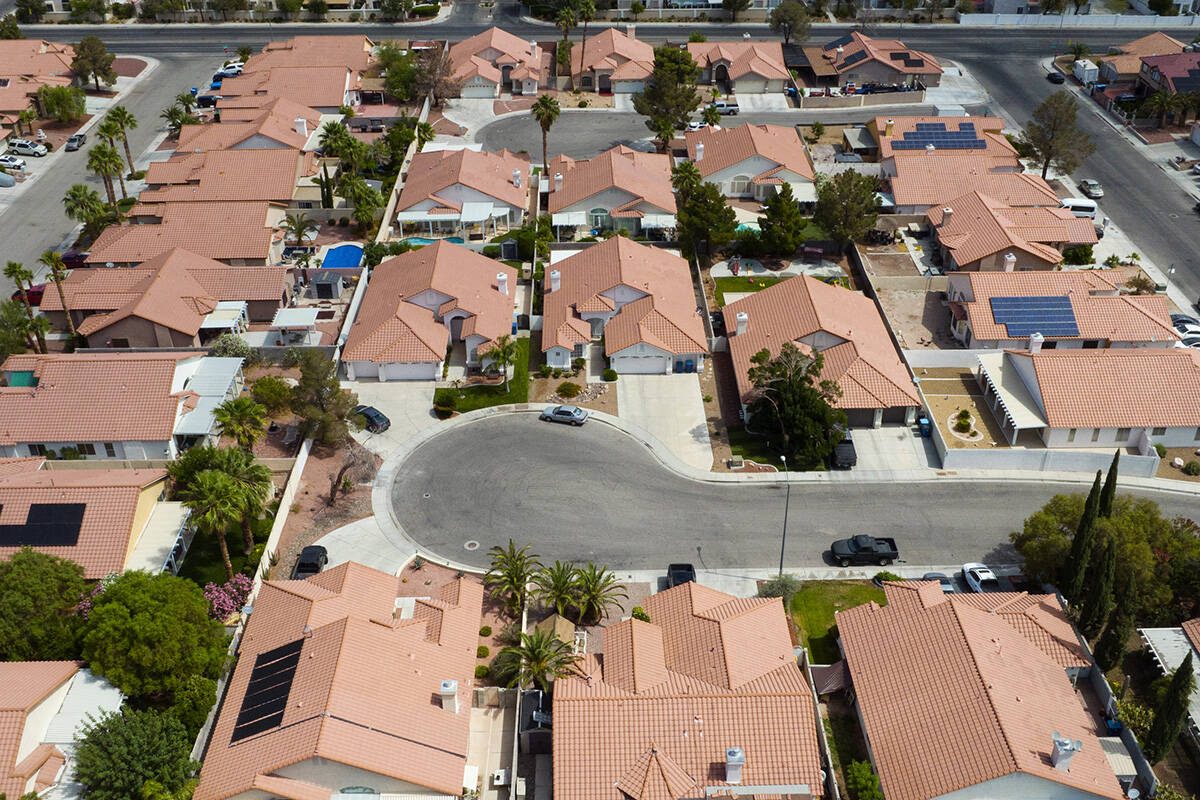Most homes for sale in Las Vegas Valley are unaffordable for locals, report says
Most of the homes for sale in the Las Vegas Valley are unaffordable for the average family, according to a new report from Redfin.
Only approximately 20 percent of the houses listed for sale in the valley are affordable for a household earning the median income, which currently sits at $81,081, according to Redfin, which used U.S. Census Bureau data in its report. The typical Las Vegas household would have to spend 40 percent of their income to buy the median-priced home.
Active listings in the valley jumped 31 percent in July compared to the same month last year, the largest increase of any metro region in the country, according to Redfin. Pending home sales have subsequently dropped 8.6 percent over this same time frame, while closed sales fell 8.5 percent, which Redfin said signals that there is serious hesitation from buyers in the local market.
The median time for a house on the market in the valley rose to 55 days in July, which is 16 days longer than July of last year, according to Redfin. The median sale price of a residential house is down 1 percent year over year, which Redfin now has at $445,000. This is the first annual decline for home prices since back in September 2023.
In an email response to the Las Vegas Review-Journal, a Redfin spokesperson said the Las Vegas Valley may now be one of the most buyer friendly markets in the country, as there are more buyers in the market than sellers. At the same time, though buyers remain cautious while inventory on the market continues to pile up.
Homeownership rate slowing
In another report by Redfin, the company reported that the American homeowner population has stopped growing for the first time in nearly a decade.
The number of homeowner households in the U.S. dropped 0.1 percent year over year to an estimated 86.2 million in the second quarter of 2025, which is the first decline since 2016. The number of rental households rose 2.6 percent year over year to the end of the second quarter to approximately 46.4 million, one of the largest increases in recent years.
Redfin used U.S. Census data for the report, and Chen Zhao, the head of economic research for Redfin, added a multitude of factors are pushing against national homeownership rates right now.
“America’s homeowner population is no longer growing because rising home prices, high mortgage rates and economic uncertainty have made it increasingly difficult to own a home,” she said. “People are also getting married and starting families later, which means they’re buying homes later—another factor that may be at play.”
Contact Patrick Blennerhassett at pblennerhassett@reviewjournal.com.



















